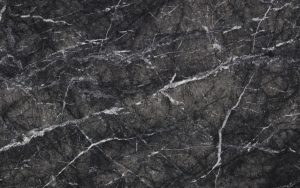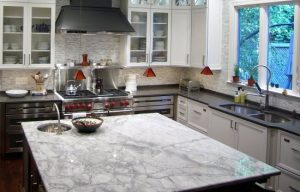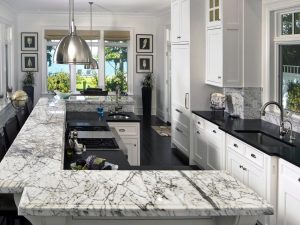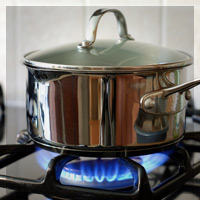
Marble Countertops
 Marble Veining
Marble Veining
Every quarry is different, but it’s possible to cut certain types of marble blocks two different ways to achieve unique veining patterns. cross cut, or fleuri cut, results in stone slabs with an open flowered pattern,which looks fairly random and is ideal for book-matching. Vein cut, or striato, slices the block the other way to achieve a linear, striped appearance.
 Marble Finish
Marble Finish
With the stone industry going through a massive wave of technology, there are now more ways than ever to finish stone, including different brushing and polishing techniques. An orange-peel-like texture is possible, also known as leather, brushed, or river-wash finish.
The most popular finishes remain polished (glossy,) or honed (matte.) Homeowners concerned about acid etching may want to consider a honed finish, as acid
etching will be less noticeable on an already dull finish.
Besides its natural beauty, the reason marble has historically been so popular for sculpture is because it is easy to work with tools. Add in the factor of modern computer numerical control (CNC) milling machines, almost anything is possible for interior decoration

There are countless edge profiles to choose from, but most common is a simple eased edge, which takes the sharpness off of a straight 90-degree corner. A bull’s nose edge, which has the profile of a half circle, is also a timeless favorite and functional winner. Edges are transformed into profiles like these for the simple reason that if a 90-degree corner is hit with something hard, it will chip. With a curve, it is highly unlikely that edges will ever chip.
To give thin ¾-inch stone the look of a thicker slab, a joint can be made at the edge of the countertop to add a thicker face with an almost seamless appearance. This way, you can acquire a thick looking countertop without having to use such a thick slab.
Maintaining Marble
Finishing marble countertops with a penetrating sealer is essential for long-term performance. With even the best of sealer, acids can still etch the surface leaving a dull spot.
Fortunately, marble can be sanded down or polished as needed, to reveal the originally chosen finish once again.
Marble countertops are quite resilient, however, the best way to live with beautiful marble countertops is to accept that they will patina over time.
 Marble is heat-resistant
Marble is heat-resistant
If you’re baking in the middle of a heat wave, you can rely on marble countertops to stay as icy as central air. Marble is also heat-resistant, making the stone an excellent option if your kitchen sees a lot of bake-offs. Despite its ability to withstand high temps, you never want to place a piping hot pot on marble, for risk of discoloration or burning of the surface — always use a pot holder.